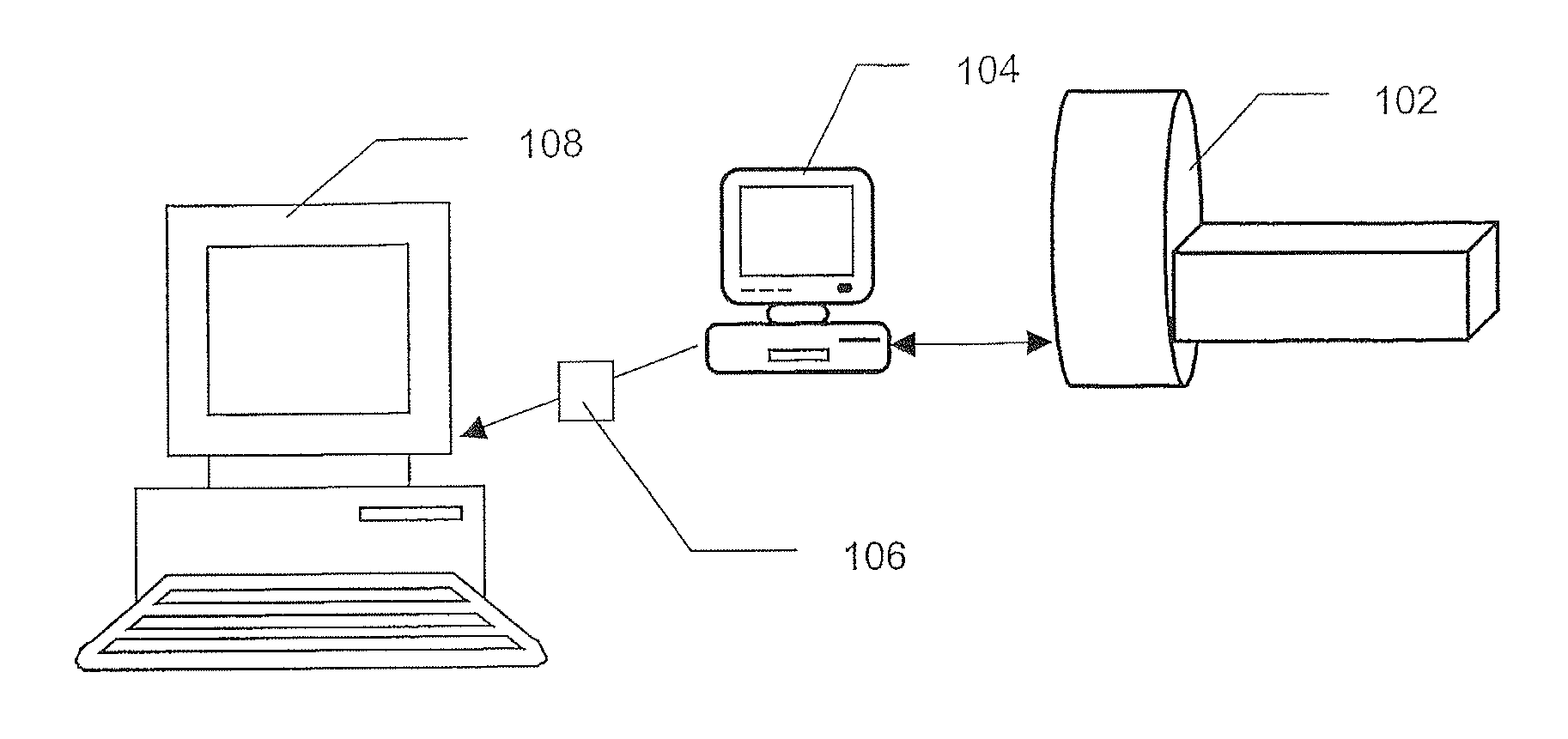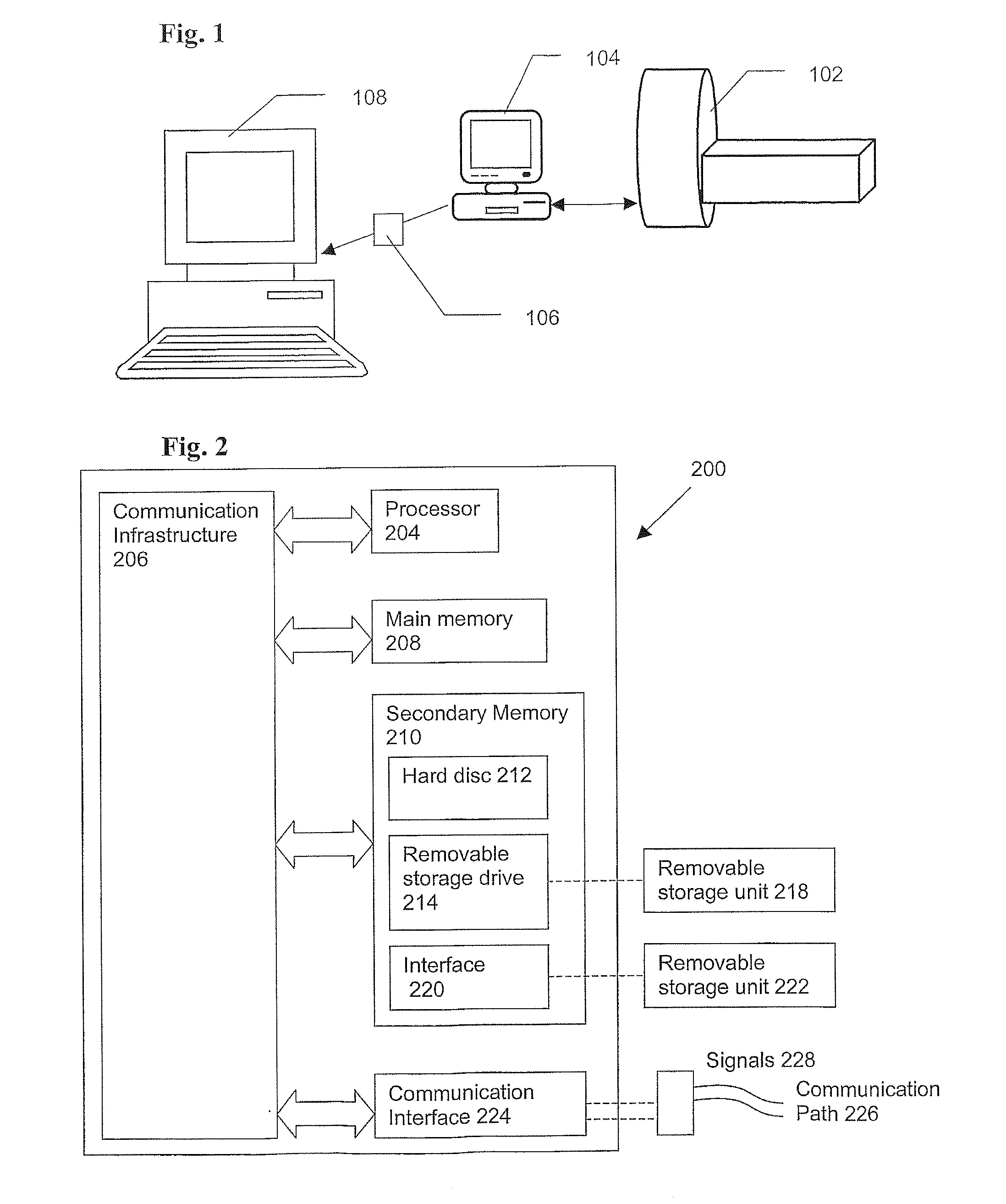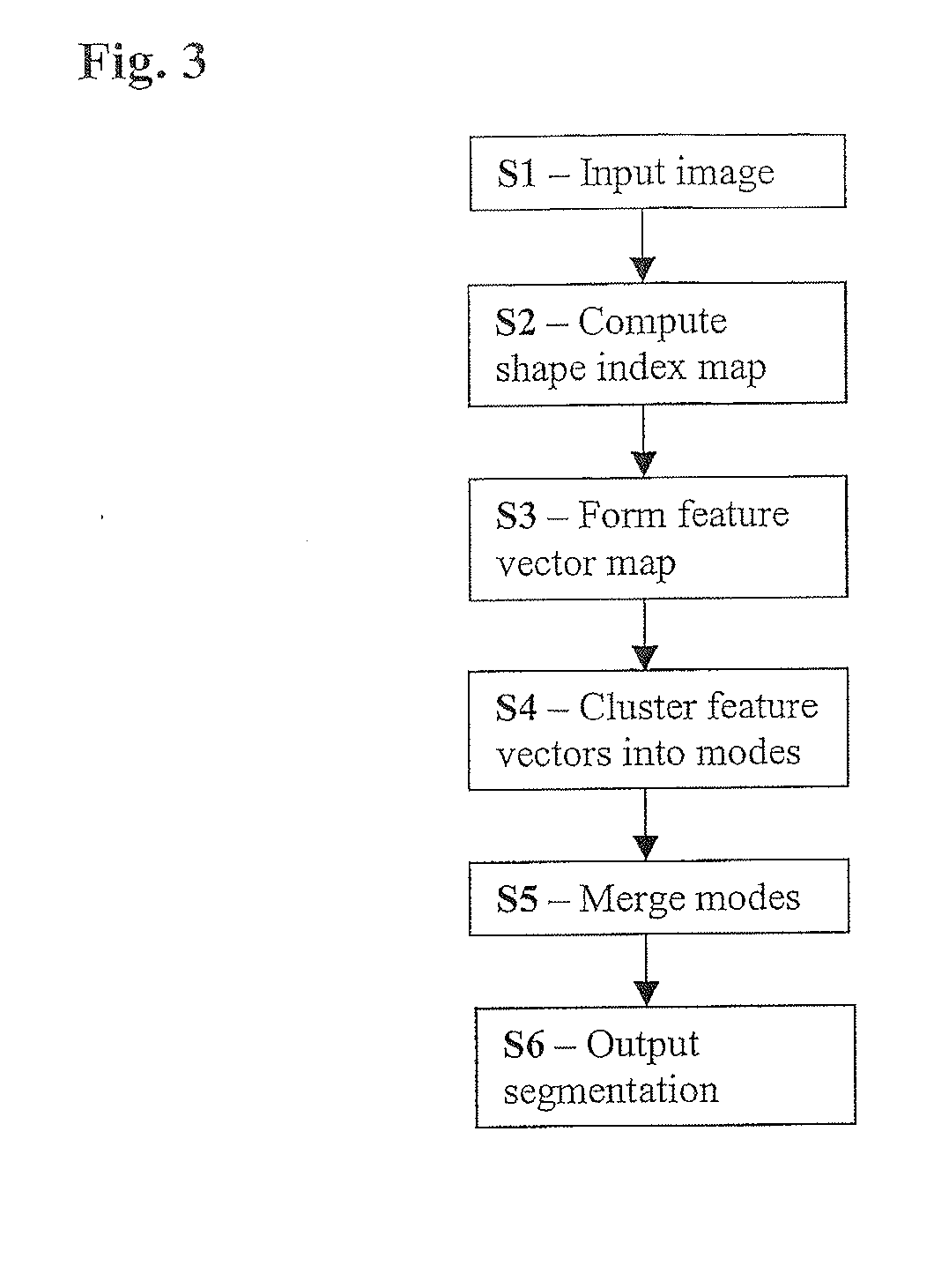Medical Image Segmentation
- Summary
- Abstract
- Description
- Claims
- Application Information
AI Technical Summary
Benefits of technology
Problems solved by technology
Method used
Image
Examples
Embodiment Construction
[0018]The present invention is applicable to digital medical images. One example of such an image is a CT scan image. A CT scan image is a digital image comprising one or a series of CT image slices obtained from a CT scan of an area of a human or animal patient. Each slice is a 2-dimensional digital grey-scale image of the x-ray absorption of the scanned area. The properties of the slice depend on the CT scanner used; for example, a high-resolution multi-slice CT scanner may produce images with a resolution of 0.5-1.0 mmG(pixel in the x and y directions (i.e. in the plane of the slice). Each pixel may have 32-bit greyscale resolution. The intensity value of each pixel may be expressed in Hounsfield units (HU). Sequential slices may be separated by a constant distance along the z direction (i.e. the scan separation axis); for example, by a distance of between 0.5-2.5 mm. Hence, the scan image may be a three-dimensional (3D) greyscale image, with an overall size depend...
PUM
 Login to View More
Login to View More Abstract
Description
Claims
Application Information
 Login to View More
Login to View More - R&D
- Intellectual Property
- Life Sciences
- Materials
- Tech Scout
- Unparalleled Data Quality
- Higher Quality Content
- 60% Fewer Hallucinations
Browse by: Latest US Patents, China's latest patents, Technical Efficacy Thesaurus, Application Domain, Technology Topic, Popular Technical Reports.
© 2025 PatSnap. All rights reserved.Legal|Privacy policy|Modern Slavery Act Transparency Statement|Sitemap|About US| Contact US: help@patsnap.com



